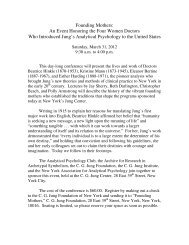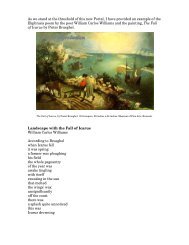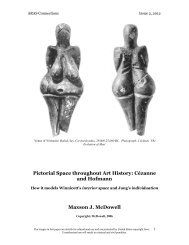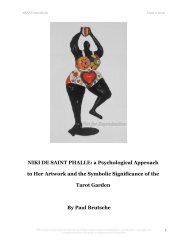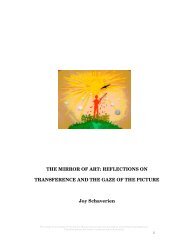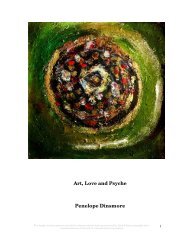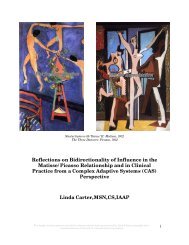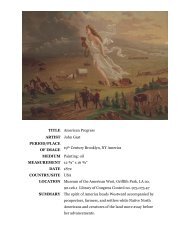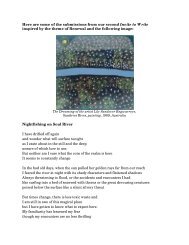The Mandala in Tibetan Buddhism by Martin Brauen - ARAS
The Mandala in Tibetan Buddhism by Martin Brauen - ARAS
The Mandala in Tibetan Buddhism by Martin Brauen - ARAS
Create successful ePaper yourself
Turn your PDF publications into a flip-book with our unique Google optimized e-Paper software.
It is provided <strong>by</strong> the well-known puzzle pictures <strong>in</strong> which blotches, l<strong>in</strong>es<br />
and dots yield next to no mean<strong>in</strong>g and cannot be <strong>in</strong>terpreted. After look<strong>in</strong>g and<br />
search<strong>in</strong>g for a long time, you suddenly recognize some content, for example a<br />
face or a shape. But the blotches, l<strong>in</strong>es, and dots of the first phase — of non-<br />
recognition — are exactly the same as those of the second phase — that of<br />
recognition of content. Noth<strong>in</strong>g has altered; evidently it is the viewer who has<br />
changed. With his consciousness he has analyzed, dist<strong>in</strong>guished, and organized<br />
the dots, l<strong>in</strong>es, and blotches. He has made discrim<strong>in</strong>ations and bestowed content<br />
and mean<strong>in</strong>g on that which is empty.<br />
(This demonstrates not only how with our discrim<strong>in</strong>at<strong>in</strong>g, analyz<strong>in</strong>g<br />
consciousness we create <strong>in</strong>dependent entities from that which is empty but also<br />
how hard it is to return these entities to the undifferentiated state. Who does not<br />
know the difficulty of dissolv<strong>in</strong>g a puzzle picture back <strong>in</strong>to mere dots, l<strong>in</strong>es, and<br />
blotches once one has made out its hidden content? Order cannot be led back<br />
<strong>in</strong>to disorder, or only with great effort. But this is precisely what someone<br />
meditat<strong>in</strong>g on empt<strong>in</strong>ess must succeed <strong>in</strong> do<strong>in</strong>g, because revers<strong>in</strong>g the process of<br />
order<strong>in</strong>g, differentiat<strong>in</strong>g, and constitut<strong>in</strong>g (seem<strong>in</strong>g) entities means recogniz<strong>in</strong>g<br />
the empt<strong>in</strong>ess of all appearances.)<br />
Contrary to the view, widely held <strong>in</strong> the West, of the tantric practitioner as<br />
disregard<strong>in</strong>g all conventions without restra<strong>in</strong>t, the person who has opted for the<br />
tantric way must, like other Buddhists, observe numerous ethical rules. <strong>The</strong>se<br />
<strong>in</strong>clude the basic Buddhist rules not to kill, lie, steal, commit adultery, or take<br />
<strong>in</strong>toxicat<strong>in</strong>g dr<strong>in</strong>k.<br />
<strong>The</strong> practitioner encounters one particular ethical precept aga<strong>in</strong> and<br />
aga<strong>in</strong>: the demand to cultivate the so-called M<strong>in</strong>d of Enlightenment (Bodhicitta;<br />
<strong>by</strong>ang-chub-kyi sems), the altruistic m<strong>in</strong>d of realization of empt<strong>in</strong>ess that is<br />
<strong>The</strong> images <strong>in</strong> this paper are strictly for educational use and are protected <strong>by</strong> United States copyright laws. Unauthorized<br />
use will result <strong>in</strong> crim<strong>in</strong>al and civil penalties.<br />
10



